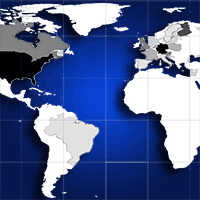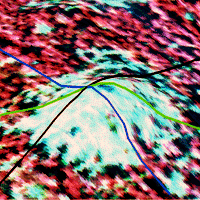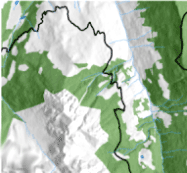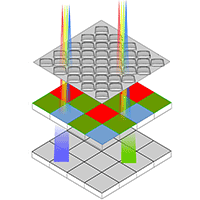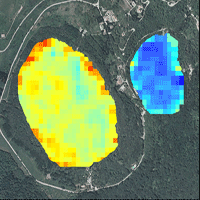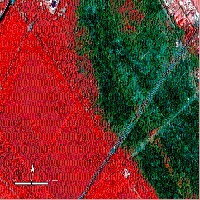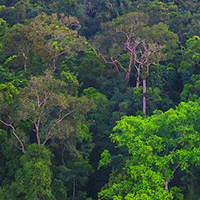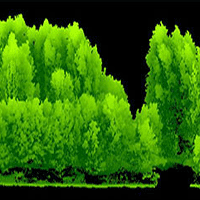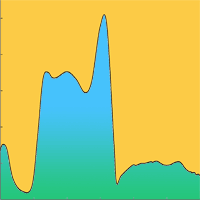
Spectral reflectance properties of healthy and stressed coniferous trees
G Masaitis (1) , G Mozgeris (1), A Augustaitis (2)
iForest - Biogeosciences and Forestry, Volume 6, Issue 1, Pages 30-36 (2013)
doi: https://doi.org/10.3832/ifor0709-006
Published: Jan 14, 2013 - Copyright © 2013 SISEF
Research Articles
Collection/Special Issue: IUFRO 7.01.00 - COST Action FP0903, Kaunas (Lithuania - 2012)
Biological Reactions of Forest to Climate Change and Air Pollution
Guest Editors: Elena Paoletti, Andrzej Bytnerowicz, Algirdas Augustaitis
Abstract
This study investigates the properties of hyperspectral reflectance of healthy and stressed coniferous trees. Two coniferous tree species which naturally grow in Lithuania, Scots pine (Pinus sylvestris L.) and Norway spruce (Picea abies (L.) Karst.), as well as an introduced species, Siberian pine (Pinus sibirica Du Tour), were selected for the study. Hyperspectral reflectance data were collected under laboratory conditions by scanning the needles of healthy (no foliar loss) and stressed Norway spruce (foliar loss 66-70%), Scots pine (foliar loss 71-75%) and Siberian pine (foliar loss 86-90%) trees using a Themis Vision Systems VNIR 400H hyperspectral imaging camera. The spectrometer of the camera covers the spectral range of 400-1000 nm with the sampling interval of 0.6 nm. Simultaneously, the chlorophyll a and b content in the needles was determined by spectrophotometrically measuring the needles’ absorbance of ethanol extracts. The statistical analyses included principal component analysis, analysis of variance and partial least squares regression techniques. Relatively large spectral differences between healthy and stressed trees were detected for Norway spruce needles: 884 out of 955 wavebands indicated a statistically different reflectance (p<0.05). The reflectance associated with the stress level was statistically different (p<0.05) in 767 and 698 out of 955 wavebands for Scots pine and Siberian pine, respectively. The most informative wavelengths for spectral separation between the needles taken from healthy and stressed trees were found in the following spectral ranges: 701.0-715.7 nm for Norway spruce, 706.1-718.2 nm for Scots pine, and 862.3-893.1 nm for Siberian pine. The relationship between the spectral reflectance properties of the needles and their chlorophyll content was also determined for each species. Waveband ranges (as well as single bands) most sensitive to changes in chlorophyll content were: 709.9-722.1 nm (715.6 nm) for Norway spruce; 709.3-721.4 nm (715.0 nm) for Scots pine; 710.6-722.7 nm (720.1 nm) for Siberian pine. In general, the study revealed that narrow-band based hyperspectral imaging has the potential for accurately detecting stress in coniferous trees.
Keywords
Conifers, Imaging Spectrometry, Hyperspectral Reflectance, Tree Stress, Waveband Selection
Authors’ Info
Authors’ address
G Mozgeris
Institute of Forest Management and Wood Science, Aleksandras Stulginskis University, Studentu str. 11, LT-53361 Akademija, Kaunas distr. (Lithuania)
Forest Monitoring Laboratory, Institute of Forest Management and Wood Science, Aleksandras Stulginskis University, Studentu str. 11, LT-53361 Akademija, Kaunas distr. (Lithuania)
Corresponding author
Paper Info
Citation
Masaitis G, Mozgeris G, Augustaitis A (2013). Spectral reflectance properties of healthy and stressed coniferous trees. iForest 6: 30-36. - doi: 10.3832/ifor0709-006
Academic Editor
Elena Paoletti
Paper history
Received: Jul 30, 2012
Accepted: Dec 19, 2012
First online: Jan 14, 2013
Publication Date: Feb 05, 2013
Publication Time: 0.87 months
Copyright Information
© SISEF - The Italian Society of Silviculture and Forest Ecology 2013
Open Access
This article is distributed under the terms of the Creative Commons Attribution-Non Commercial 4.0 International (https://creativecommons.org/licenses/by-nc/4.0/), which permits unrestricted use, distribution, and reproduction in any medium, provided you give appropriate credit to the original author(s) and the source, provide a link to the Creative Commons license, and indicate if changes were made.
Web Metrics
Breakdown by View Type
Article Usage
Total Article Views: 61681
(from publication date up to now)
Breakdown by View Type
HTML Page Views: 51243
Abstract Page Views: 3345
PDF Downloads: 5527
Citation/Reference Downloads: 41
XML Downloads: 1525
Web Metrics
Days since publication: 4718
Overall contacts: 61681
Avg. contacts per week: 91.51
Citation Metrics
Article Citations
Article citations are based on data periodically collected from the Clarivate Web of Science web site
(last update: Mar 2025)
Total number of cites (since 2013): 32
Average cites per year: 2.46
Publication Metrics
by Dimensions ©
Articles citing this article
List of the papers citing this article based on CrossRef Cited-by.
References
Needle reflectance of healthy and diseased Spruce stands. In: “Material of 1 EARSeL workshop on imaging spectroscopy”. Remote Sensing Laboratories, University of Zurich, Switzerland, pp. 271-283.
Gscholar
Color infrared aerial images to evaluate tree crown defoliation. In: Proceedings of the “4 International Scientific Conference on Rural Development”. Akademija, Kaunas distr. (Lithuania), 15-17 October, 2009. Lithuanian University of Agriculture, vol. 4, book 2. pp. 213-216.
Gscholar
Testing the simultaneous use of laser scanning and aerial image data for estimation of tree crown density. In: Proceedings of the “16 Annual International Conference Research for Rural Development”. Jelgava (Latvia), 19-21 May, 2010. Latvia University of Agriculture, vol. 1, pp. 201-207.
Gscholar
Potential utility of the spectral red-edge region of SumbandilaSat imagery for assessing indigenous forest structure and health. International Journal of Applied Earth Observation and Geoinformation 16: 85-93.
CrossRef | Gscholar
Remote sensing in forest health protection. FHTET Report No. 00-03, Forest Health Technology Enterprise Team, Remote Sensing Applications Center, USDA Forest Service, Salt Lake City, Utah, USA.
Gscholar
Visual assessment of crown condition and damaging agents. Manual Part IV. In: “Manual on Methods and Criteria for Harmonized Sampling, Assessment, Monitoring and Analysis of the Effects of Air Pollution on Forests”. UNECE ICP Forests Programme Co-ordinating Centre, Hamburg, Germany, pp. 49.
Gscholar
Forest condition in Europe. Technical Report, ICP Forests and FutMon. Work Report of the Institute for World Forestry 2011/1. ICP Forests, Hamburg, Germany.
Gscholar
A new hyperspectral index for chlorophyll estimation of a forest canopy: area under curve normalised to maximal band depth between 650-725 nm. EARSeL eProceedings 5: 161-172.
Gscholar
Development of a spectral library for mediterranean land cover types. In: Proceedings of the “30 EARSeL Symposium: Remote Sensing for Science, Education and Natural and Cultural Heritage” (Reuter R ed). Paris (France), 31 May - 3 June 2010, pp. 663-668.
Gscholar
Small format aerial images to estimate the pine crown defoliation. In: Proceedings the “Fifth International Scientific Conference on Rural Development”. Akademija, Kaunas distr. (Lithuania), 24-25 November 2011. Aleksandras Stulginskis University, vol. 5, book 2, pp. 452-458.
Gscholar
Forest health monitoring in Lithuania: 1988-1995. Lietuvos Mišku Institutas, Kaunas, Lithuania. [in Lithuanian]
Gscholar
The optical properties of coniferous trees damaged by air pollution. Musu Girios 1: 5-6.
Gscholar
Remote sensing of forest health. International Archieves of Photogrammetry, Remote Sensing and Spatial Information Sciences, vol. 36 - 8/W2, pp. 161-166.
Gscholar
Spectral mixture analysis to monitor defoliation in mixed-aged Eucalyptus globulus Labill plantations in southern Australia using Landsat 5-TM and EO-1 Hyperion data. International Journal of Applied Earth Observation and Geoinformation 12: 270-277.
CrossRef | Gscholar
Lithuanian statistical yearbook of forestry. Lutute, Kaunas, Lithuania.
Gscholar
Hyperspectral remote sensing for estimating biophysical parameters of forest ecosystems. Progress in Physical Geography 23: 359-390.
Gscholar
Advanced image processing techniques for remotely sensed hyperspectral data. Springer Press, Berlin, Germany.
Gscholar
Estimation of principal components and related models by iterative least squares. In: “Multivariate Analysis” (Krishnaiah PR ed). Academic Press, New York, USA, pp. 391-420.
Gscholar

